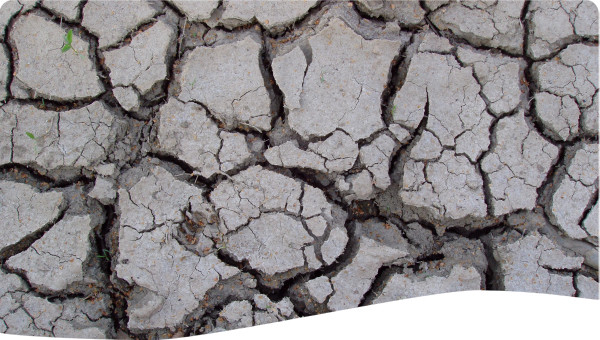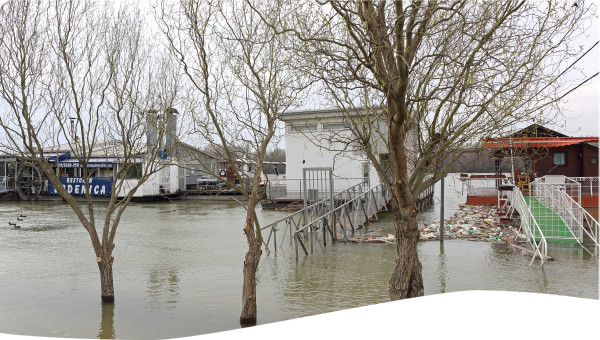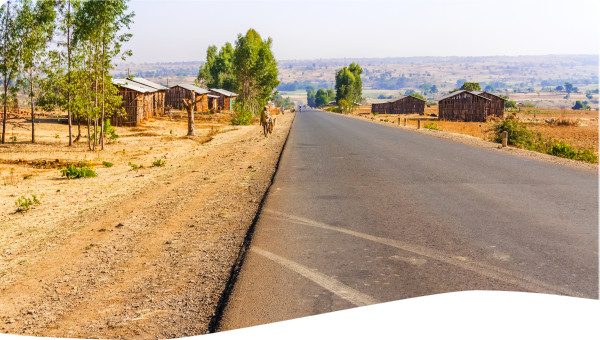 Tool -
Tool -
Drought is defined as “a natural phenomenon that is a temporary, negative and severe deviation along a significant time period and over a large region from average precipitation values (a rainfall deficit), which may lead to meteorological, agricultural, hydrological, and socio-economic drought, depending on its severity and duration” (WMO and WHO, 2012, 30). Droughts are thus characterised by the intensity of the precipitation deficiency, the duration of the deficiency, and its impacts on human activities and the environment. Drought risk refers specifically to the “intersection of the probability of a drought event (hazard) with potential adverse consequences for people, the environment, and economic activities associated with a drought event (impacts)” (WMO and GWP, 2015, 26).
The Integrated Drought Management Approach aims to mitigate risks associated to drought whilst building drought resilience through affecting multiple components of drought management process such as disaster risk reduction, climate adaptation, strategies, and national water policies. Considering the interconnected nature and wide-raging impact of droughts, effective drought management must be integrated across sectors and within and between levels of government as well as with NGOs.
The Integrated Drought Management vision stands on three interrelated pillars (Fig. 1):
- Vulnerability and Impact Assessment: which stakeholders are affected by drought risks, how and why? Who are those actors that are most at risk and thus should be most prioritised?
- Monitoring and Early Warning: what are the hydro-climatic conditions and what is the drought status?
- Mitigation, Preparedness, and Response: what are the actions and measures in place to tackle drought impacts and be prepared to drought events?
Figure 1. Three Pillars of IDM (Adapted from WMO and GWP, 2014)
One of the cornerstones of the Integrated Drought Management strategy is the shift from “crisis management” towards a “risk management” approach (Figure 2).
- Crisis Management: is the common approach based on implementation of actions after the drought event as started. This approach is mostly inefficient since it aims to treat the symptoms of the vulnerability, i.e., the impacts, thus indirectly rewarding poor management of resources. Ultimately, a strategy focused on post-impact drought relief increases the vulnerability of countries and their reliance on international aid.
- Risk Management: involves designing measures and strategies for risk prevention and reduction in the short and long term. This is a proactive approach that covers not only measures and actions to be taken in case of a drought event but also helps in identifying root causes of the vulnerability to the drought hazard (e.g., weaknesses within the institutional and organisational capacities). The aim is thus to reduce vulnerability through building self-reliance and improved environmental stewardship.
Figure 2. Risk Reduction Approaches (Adapted from WMO and GWP, 2014)
A Drought Management Plan (DMP) is an administrative framework for the enacting of a drought policy based on the risk reduction approach. The “Ten-Step Drought Planning Process” developed by IDMP provides a holistic framework for developing a integrated drought management policy and plan (Figure 3) (WMO and GWP, 2014):
- Step 1: Appoint a national drought management policy commission: this should include all relevant stakeholders and sectors, e.g., Ministry of Agriculture, Forestry, Land Planning, meteorological institute, civil society groups, academia, etc. The commission is responsible for developing the policies and subsequent plans as well as following up with the implementation process.
- Step 2: State or define the goals and objectives of a risk-based national drought management policy: this should be guided a risk reduction management principle rather than mere crisis management vision. When considering drought response measures these should be aimed at building self-reliance and boosting resiliency for future events. In developing the objectives, commission representatives should consider what are the socio- economic implications of recent droughts and how may future drought events impact the socio-economic and environmental well-being.
- Step 3: Seek stakeholder participation; define and resolve conflicts between key water use sectors, considering also transboundary implications: together with the help of various stakeholder groups the commission should map out all how water resource competition may evolve as a result of future drought events and find collaborative solutions to mitigating such water conflicts.
- Step 4: Inventory data and financial resources available and identify groups at risk: including what are the available natural and ecological resources that might be mobilised as part of formulating a drought risk management response. Similarly, this involves a mapping of the human and financial resources that would be needed for the development of solutions towards drought mitigation and risk reduction and the groups that need to be prioritised.
- Step 5: Prepare/write the key tenets of the national drought management policy and preparedness plans: including elements related to the monitoring, early warning and prediction, risk and impact assessment and mitigation and response. This deals with the operational and procedural aspects of these aforementioned elements, such as how will drought monitoring and the mitigation and response committees will be set up and carry out their functions. The “Handbook of Drought Indicators and Indices” (WMO and GWP, 2016) provides for more information and ready access to indicators and indices for drought.
- Step 6: Identify research needs and fill institutional gaps: focusing, for instance, on early warning and drought forecasting capacities as well as other decision support systems for policy makers. Ideally, step 6 should be carried out in parallel to steps 4 and 5.
- Step 7: Integrate science and policy aspects of drought management: for a two-way information flow and communication between scientist and policy-makers so that perspectives and constrains can be mutually understood.
- Step 8: Publicise the national drought management policy and preparedness plans and build public awareness and consensus: media and other public information dissemination actors should be involved all along the development of the drought management planning process with the intent of making sure the design responds to local needs and concerns.
- Step 9: Develop educational programmes for all age and stakeholder groups: so that institutional actors and the public don’t lose sight of the importance of drought preparedness during non-drought years. Events such as World Water Day or Earth Day can be used to mobilise public attention.
- Step 10: Evaluate and revise national drought management policy and supporting preparedness plans: through continuous and post-drought monitoring and evaluations. Ongoing evaluations capture dynamic feedback on the overall drought policy and plans taking into consideration changes in the politico-institutional set up and hydroclimatic conditions. Post-drought evaluations are intended to evaluate the extent to which measures put in place have been effective at responding and coping to the drought hazard.
Figure 3. Components of Drought Management Plan (Adapted from WMO & GWP, 2015)





